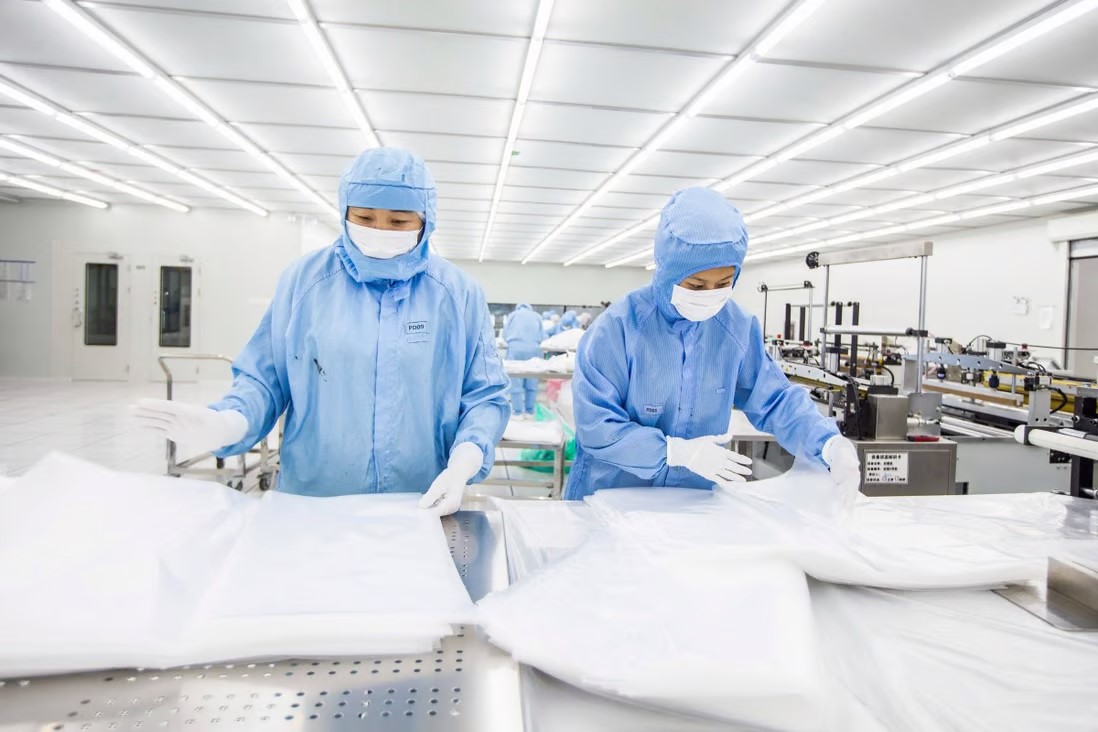
By Gabby Chen
(JW Insights) Mar 14 -- Chinese investors are rushing to invest in photoresist companies that can produce substitutive products in case of possible restrictions on photoresist exports from Japan to China and insufficient production capacity, according to a recent report by JW Insights analyst Chen Xinghua.
Rumors circulated on March 8 that a Japanese photoresist company had stopped supplying a Chinese chip company. As a result, photoresist concept stocks became popular, particularly Rongda Photosensitive & Technology, which rose by 50% in three days.
But industry experts rule out significant impact on the Chinese supply chain from the Japanese semiconductor material sanctions and call investors to remain calm and rational during this special period despite geopolitical tensions and market demands.

There are other factors for the recent positive performance of the domestic photoresist sector.
"Japanese companies are unable to keep up with demand because of insufficient production capacity, leading to a tight supply of goods. Moreover, these companies tend to prioritize their existing customers and do not provide samples or quotes to new customers," an industry insider explained.
Meanwhile, there is the possibility of speculation by certain institutions and hot money players. As mentioned in the Shenzhen Stock Exchange's letter of concern to Rongda Photosensitive & Technology, the bourse questioned whether there had been any information leakage or misleading investors, stock price speculation, or any violations of regulations regarding the trading of company stocks.
According to industry insiders, although it has not been confirmed whether the supply of photoresists will be cut off, certain models, such as high-end KrF and Arf photoresists, are likely to be affected.
A report by Zheshang Securities in November 2022 showed that traditional photoresists, such as G- and I-Line, had a supply ratio of about 30% domestically, while KrF had dropped to 10%, and the supply ratio of advanced Arf and EUV photoresists had fallen to under 2%.
In addition, Japan previously cut off photoresist supply in the past because of insufficient production.
It is worth mentioning that the US's Export Administration Regulations (EAR) on advanced manufacturing is a general control. Products that are not manufactured in the US and have less than 25% American technology are not subject to this rule. And many Japanese photoresist products adopt special formulas, which are relatively easier to achieve less than 25% of American technology. Therefore, they might still be supplied normally and not regulated by the EAR, according to JW Insights.
An analyst from Zhongtai Electronics noted that the sources of semiconductor materials are more diversified than those of equipment, making it unlikely that Chinese chip firms will be significantly impacted by semiconductor material sanctions. There are a number of alternative resources for photoresists.
Chinese fabs still rely on mature process nodes of 28nm and above, and the demand for photoresists is concentrated in the lower end, matching the current domestic layout in the industry.
Considering the increasing demand for chips in various emerging industries, photoresist, as one of the key bottleneck technologies, has gathered increased attention and support from the government. Therefore, the sector is expected to further benefit from increased preference in the capital market.
In light of the present supply chain risks, Chinese fabs should consider stocking up on supplies while also hastening the verification and adoption of domestically-made photoresists, according to JW Insights.
RELATED
-
Apple’s Chinese supplier Luxshare Precision gives up $330 million investment in India
11-20 17:28 -
European Commission President von der Leyen will visit China in wake of the EU’s ongoing probe into China’s subsidies on EV industries
11-20 16:59 -
Chinese top-tier chipmaker HuaHong Semiconductor's net profit plummets 86 percent in the third quarter
11-17 19:11
READ MOST

No Data Yet~







